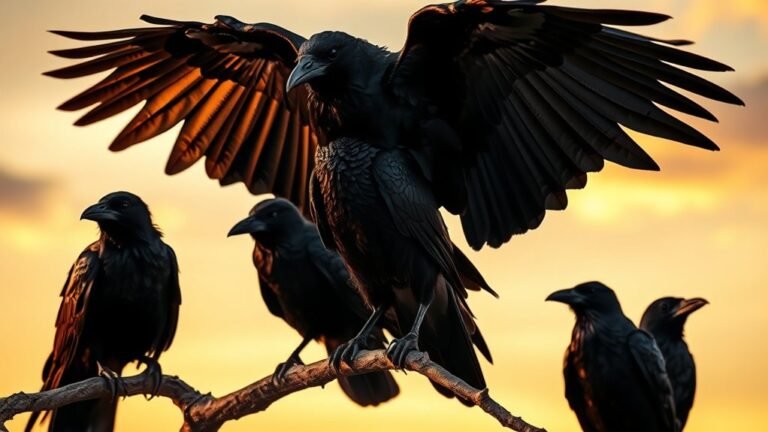Are Birds Warm-blooded? Understanding Their Physiology
Are Birds Warm-blooded? Let's Find Out!
Birds are warm-blooded animals, which means they can keep their body temperature steady, no matter the weather. This is different from cold-blooded animals, which depend on the outside temperature to stay warm.
Birds stay active in cold weather because they have a fast metabolism. This means their bodies work quickly to turn food into energy. But how do they do this? Let's take a closer look at how birds manage their temperature.
Birds have special features that help them stay warm. For example, they have feathers that provide insulation. These feathers trap warm air close to their bodies. Birds also often huddle together to share body heat.
In summary, birds are fascinating. They can stay warm and active in many different environments because of their unique abilities. As they fly around, they remind us of how incredible nature can be!
A Quick Overview
Birds are warm-blooded, which means they can keep their body temperature steady. This helps them stay active, even when it's cold outside. They do this by using the energy from the food they eat to create heat inside their bodies.
Unlike cold-blooded animals like reptiles, birds don't go slow when it's chilly. Their feathers help keep them warm too. The feathers trap heat, so birds can live in many different places.
Sometimes, birds do things like sit in the sun to warm up. These behaviors help them feel just right, no matter the weather.
The Basics of Bird Physiology

Birds are amazing creatures with special features that help them live in many different places. One of the coolest things about birds is their feathers. Feathers are mainly made of a stuff called keratin, and they do a lot more than just help birds fly.
Feathers keep birds warm. They trap air, which helps keep the heat close to their bodies. This is really important, especially when it gets cold outside. By staying warm with their feathers, birds can save energy and stay healthy.
When you learn about how birds are built, you see how their bodies help them adapt to their homes. These features help birds survive and thrive in different environments, showing just how strong and clever they are.
Endothermy vs. Ectothermy
How do birds keep warm when the weather changes? Birds are endothermic. This means they can control their own body temperature, no matter what's happening outside. Because of this, they can fly in cold weather and stay active, even if it's chilly outside.
Birds are different from reptiles, which are ectothermic. Reptiles depend on the sun or heat from their surroundings to warm up. When the temperature changes, reptiles may not be able to move around much.
Birds, on the other hand, can create their own heat, so they stay full of energy.
These special ways to stay warm help birds live in many different places. They play a big role in nature, making them important to their ecosystems.
The Role of Metabolism in Temperature Regulation

Metabolism helps birds keep their body temperature stable. It allows them to stay warm even when the weather changes.
When birds eat, their bodies quickly turn food into energy. This energy creates heat, which keeps them warm. A bird's metabolic rate shows how fast this happens.
Birds can change their metabolic rate based on how active they are, the weather, and what they need at the time.
For example, when it gets cold, birds' bodies work harder. They create more heat to stay active and warm.
Adaptations for Thermoregulation
Birds are special creatures that have cool ways to stay comfortable in different temperatures. Here are some of the ways they do it:
- Feather Insulation: Birds have unique feathers that trap air. This helps keep them warm when it's cold outside, almost like wearing a cozy jacket.
- Behavioral Adaptations: Birds like to find sunny spots or shade. They change their body position to catch the warmth from the sun or stay cool when it's hot.
- Circulatory Adjustments: Birds can control their blood flow. They do this to keep heat in their bodies while letting some out, keeping their core temperature just right.
These amazing tricks help birds live happily in many places, no matter the weather!
Common Myths About Bird Temperature Regulation

Many people think that all birds like warm weather and can't handle the cold. This idea isn't true. Different birds have different ways to stay warm. For example, the Arctic Tern has special feathers that keep it warm even in freezing temperatures.
Many birds have learned tricks to help them control their body heat. They might fluff up their feathers to trap air and stay warm or bask in the sun to get heat.
These actions show that birds can do more than just survive in warm areas. You might be surprised to know that plenty of birds live happily in cold places.
They've cool skills that help them adapt to different temperatures. This shows how amazing birds are when it comes to living in various environments.
Frequently Asked Questions
Do Birds Sweat to Cool Down Like Mammals?
Birds do not sweat like mammals do. Instead, they have special feathers and other ways to stay cool. When it gets hot, birds can flap their wings to create airflow. They also pant, which helps them cool down. These methods help them keep their body temperature just right, even on warm days.
How Does Feather Color Affect a Bird's Temperature?
Feather color helps birds manage their body temperature. Birds with dark feathers soak up more heat from the sun. This makes them warmer. On the other hand, birds with light feathers reflect sunlight. This helps keep them cooler.
This feather color trick is important for birds living in different climates. They use their colors to stay comfortable in hot or cold weather. So, feather color is not just pretty; it plays a big role in helping birds survive!
Can Birds Survive Extreme Cold Conditions?
In extreme cold, birds have some cool tricks to survive. They can migrate to warmer places. When they stay, they use special ways to keep warm.
Birds fluff up their feathers to trap warm air. This helps them stay cozy. They also change how they act. For example, they might huddle together or find shelter to avoid the cold wind.
These skills help them live in tough weather. So, whether they fly south or bundle up, birds are good at handling the cold.
What Impact Does Climate Change Have on Bird Physiology?
Climate change affects birds in many ways. It changes their bodies and how they use energy. Birds need to adapt to new weather patterns and food availability. They change their behaviors to find enough food and stay warm. For example, some birds might eat different types of food or migrate to new places.
As the climate shifts, birds must change quickly to survive. These changes help them cope with warmer temperatures and altered habitats. Understanding how birds adjust can help us see how climate change impacts nature. Overall, birds are incredible at adapting, but they need a stable environment to thrive.
Do All Bird Species Maintain the Same Body Temperature?
Not all birds have the same body temperature. Different species have different temperatures based on where they live and how they stay warm or cool. Some birds live in hot places, while others live in cold areas. These differences help them survive in their environments.
For example, a penguin in icy waters will have a different body temperature than a parrot in the rainforest. Each bird has special ways to keep warm or cool down, making them unique. Learning about these differences can make you appreciate how amazing birds really are!

Luna is the passionate founder and author of Birds and You, a website dedicated to sharing her love for birds with fellow enthusiasts. Through her engaging articles and guides, she aims to educate and inspire others to explore the fascinating world of birds. When she’s not writing, you can find Luna observing birds in their natural habitats or sharing beautiful bird photography on Pinterest. Join her on this journey to celebrate and protect our feathered friends!







